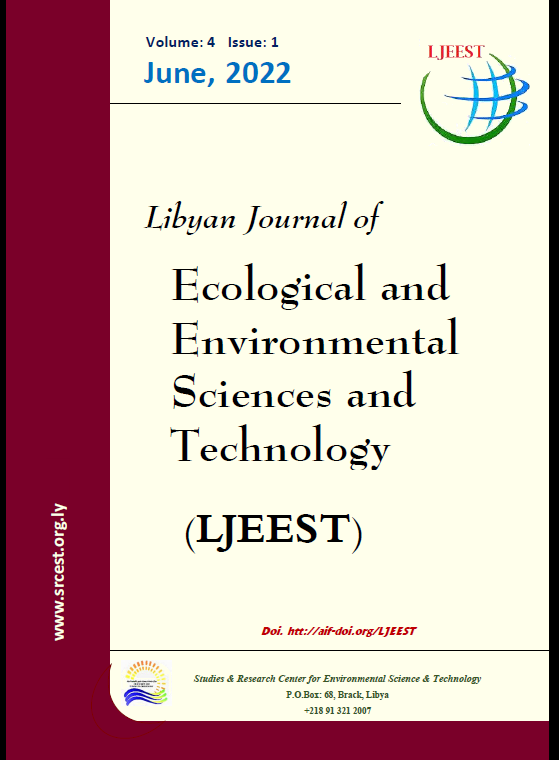Behaviour of Leaching Trace Element From Pulverised Coal fly Ash
DOI:
https://doi.org/10.63359/h614qc67Keywords:
,, fly,Ash, trace,element, leachingAbstract
Coal is a source of energy and one type of fossil fuel which is being used worldwide for long time in many applications such as electricity production and industrialised area. Combustion of fossil fuels is and will probably continue to be an important part of the heat and power production systems of many countries. Thus, depending on type and origin of the coal, about 5-15% of the total remains as ash formed from mineral matter. Many elements such as B, Cr, Cu, Ni, Mo, S, V, etc occur in the coal during its formation and condensed to the ash when is burnt. Leaching these hazardous elements from bottom and fly ash will cause environmental problems. Two different types of fly ashes (PEA1, PFA2) were leached with deionised water and nitric acid. The results showed that most of the elements of environmental concern in fly ash are present in small quantities and high leaching rates can be found in acidic conditions (lower pH).
References
Baba, A., Kaya, A., Leaching characteristics of wastes from thermal power plants of western Turkey and comparison of toxicity methodogies. Journal of Environmental Management, 2004. 73: p.199-207.
Brigden, K., Santillo. D., Heavy metal and metalloid content of fly ash collected from the Saul, Mauban and Masinloc coal-fired power plants in the Philippines, 2002. Department of Biological Sciences, University of Exeter, UK.
Bushell, A.J., The occurrence of trace elements in UK coal and their fate on gasification and disposal of residues, PhD Thesis, 1997, Department of Materials, Imperial College, London.
Choi, S. K. el at., Leaching characteristics of selected Korean fly ashes and its implications for the groundwater composition near the ash disposal mound, Fuel, 2002. 81: p. 1083-1090.
Gutierrez, B., el at., Characterization and leaching of coal fly ash, Waste Management & Research, 1993. 11: p. 279-286.
Hassett, D, J., el at: Leaching of CCBs: observations from over 25 years of research, Fuel, 2005. Article in press.
Hage, J, L., el at., Preliminary assessment of three new European leaching tests, Waste Management, 2004. 24: p. 165-172.
Hong, K., el at., Extraction of heavy metals from MSW incinerator fly ashes by chelating agents, 2000.75:p. 57-73.
Iwashita, A., el at: Leaching characteristics of boron and selenium for various coal fly ashes, Fuel, 2005. 84: p. 479-485.
Iyer, R., The surface chemistry of leaching coal fly ash, Journal of Hazardous Materials, 2002. 93: p.321-329.
Otero-Rey, J., el at., Influence of several experimental parameters on As and Se leaching from coal fly ash samples. Fuel, 2005. Article in press.
Pelley, S and Cohen, H., Evaluation of the leaching potential of trace elements from coal ash to the (groundwater) Aquifer, 1999, International ash utilization symposium, centre for applied energy research, University of Kentucky.
Sahuquillo, A., el at., Overview of the use of leaching/extraction tests for risk assessment of trace metals in contaminated soils and sediments, Trace Trends in Analytical Chemistry, 2003. 22: p. 152- 159.
Sear, L, k., el at., The Environmental Impacts of Using Fly Ash-the UK producers’ perspective, 2003, power Technology Ltd, Nottingham centre for pavement Engineering and United Kingdom Quality Association.
Sloot, H, A., el at., The influence of reducing properties on leaching of elements from waste materials and construction material, 1994. Environment Aspect of Construction with Waste Materials.
Spears, D, A., Role of clay minerals in UK coal combustion, Applied Clay Science, 2000. 16: p. 87-95.
Steenari, B, M. el at., Chemical and leaching characteristics of ash from combustion of coal, peat and wood in a 12 MW CFB- a comparative study, Fuel, 1999. 78: p. 249-258.
Swaine, D.J., Environmental Aspects of Trace Elements in Coal, 1995, Kluwer Academic Publishers: Netherland. P. 221-262
Swaine, D, J., Why trace elements are important. Fuel Processing Technology, 2000. 65-66: p. 21-33.
Wang, Y., el at., comparative leaching experiments for trace elements in raw coal, laboratory ash, fly and bottom ash. International Journal of Coal Geology, 1999. 40: p. 103-108.
Yan, R., el at., Volatility and chemistry of trace elements in coal combustor. Fuel, 2001. 80: p.2217- 2226.
Zandi, M., Russell, N., Trace element leaching behaviour from pulverised coal fly ash. University of Sheffield, UK, 2004.
Downloads
Published
Issue
Section
License
Copyright (c) 2025 Libyan Journal of Ecological & Environmental Sciences and Technology

This work is licensed under a Creative Commons Attribution-NonCommercial 4.0 International License.














